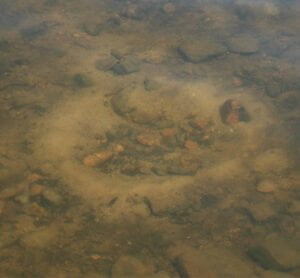Have you ever wondered how to catch smallmouth bass in rivers? Look no further! In this article, we will share some valuable tips and techniques that will help you reel in those elusive and feisty smallmouth bass. From choosing the right bait and equipment to finding the prime fishing spots, we’ve got you covered. So, grab your fishing gear and get ready to learn how to have a successful fishing adventure targeting smallmouth bass in rivers. Whether you are a seasoned angler or a beginner, these tips will surely help you improve your bass-catching skills.
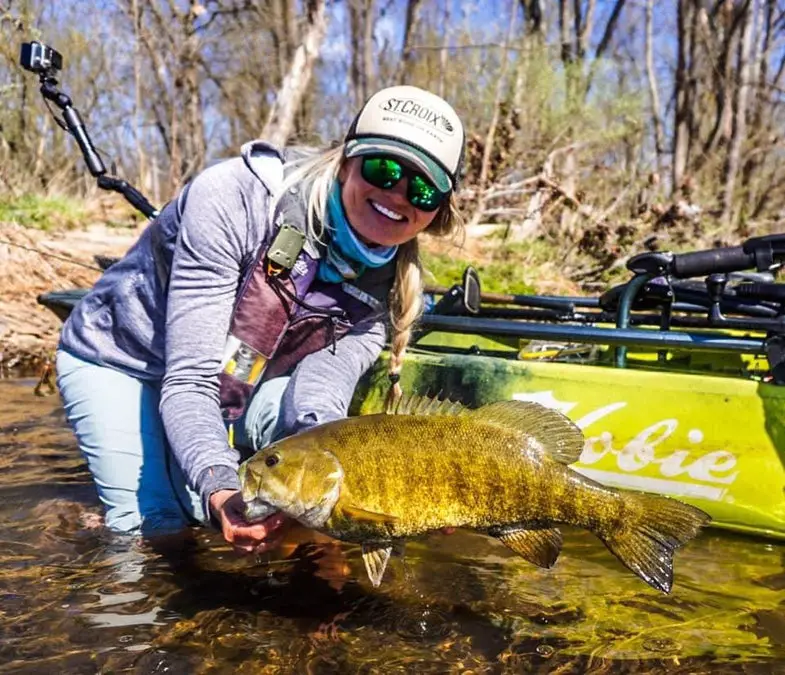
Best Time to Catch Smallmouth Bass
Spring
Spring is an excellent time to catch smallmouth bass in rivers. As the water starts to warm up after the cold winter months, smallmouth bass become more active and begin to move towards their spawning areas. During this time, the bass are actively feeding and looking for places to procreate. Look for areas with rocky bottoms and shallow water, as these are ideal spots for spawning. The best fishing spots in the spring are usually in the upper reaches of the river where the water is slightly warmer and shallow.
Summer
Summer is another great time to catch smallmouth bass in rivers. As the water continues to warm up, the bass become even more active and begin to move to deeper areas of the river. Look for deep holes, rocky structures, and areas with good current flow. Smallmouth bass tend to seek shelter in these deeper areas during the warmer months to escape the heat. Using techniques such as casting and retrieving with crankbaits or soft plastics can be very effective during this time.
Fall
Fall is considered by many anglers to be the best time of year to catch smallmouth bass in rivers. As the water starts to cool down after the hot summer months, the bass become more aggressive and feed heavily to prepare for the upcoming winter. Look for areas with good current flow and structure such as rock shelves and drop-offs. As the water temperature drops, the bass tend to move towards the shallower areas, making them easier to target. Using jigs or soft plastics can be highly effective during this time.
Understanding the Habitat of Smallmouth Bass
River Structures
Smallmouth bass are often found near various river structures. These structures provide shelter, food, and cover for the bass. Look for areas with fallen trees, submerged logs, and rock piles. These structures create hiding places for the bass and attract prey that the bass feed on. Fishing around river structures can be very productive, especially during the spring and fall when the bass are actively feeding.
Eddies and Current Breaks
Eddies and current breaks are another important habitat for smallmouth bass. Eddies are created when the main current hits an obstacle, such as a large rock or fallen tree, and creates a swirling pocket of slower water. These eddies provide a resting place for the bass, as they can conserve energy while still being in an area with good access to food. Look for eddies near river structures or areas where the current changes direction.
Rocky Areas
Rocky areas are prime spots for catching smallmouth bass. Smallmouth bass love rocky areas because they provide cover and food sources. Rocks create crevices and pockets where the bass can hide and ambush their prey. Look for areas with submerged rocks or rock shelves. These areas often have good current flow, which brings in food and oxygen for the bass. Casting near or around rocky areas with crankbaits or soft plastics can yield excellent results.
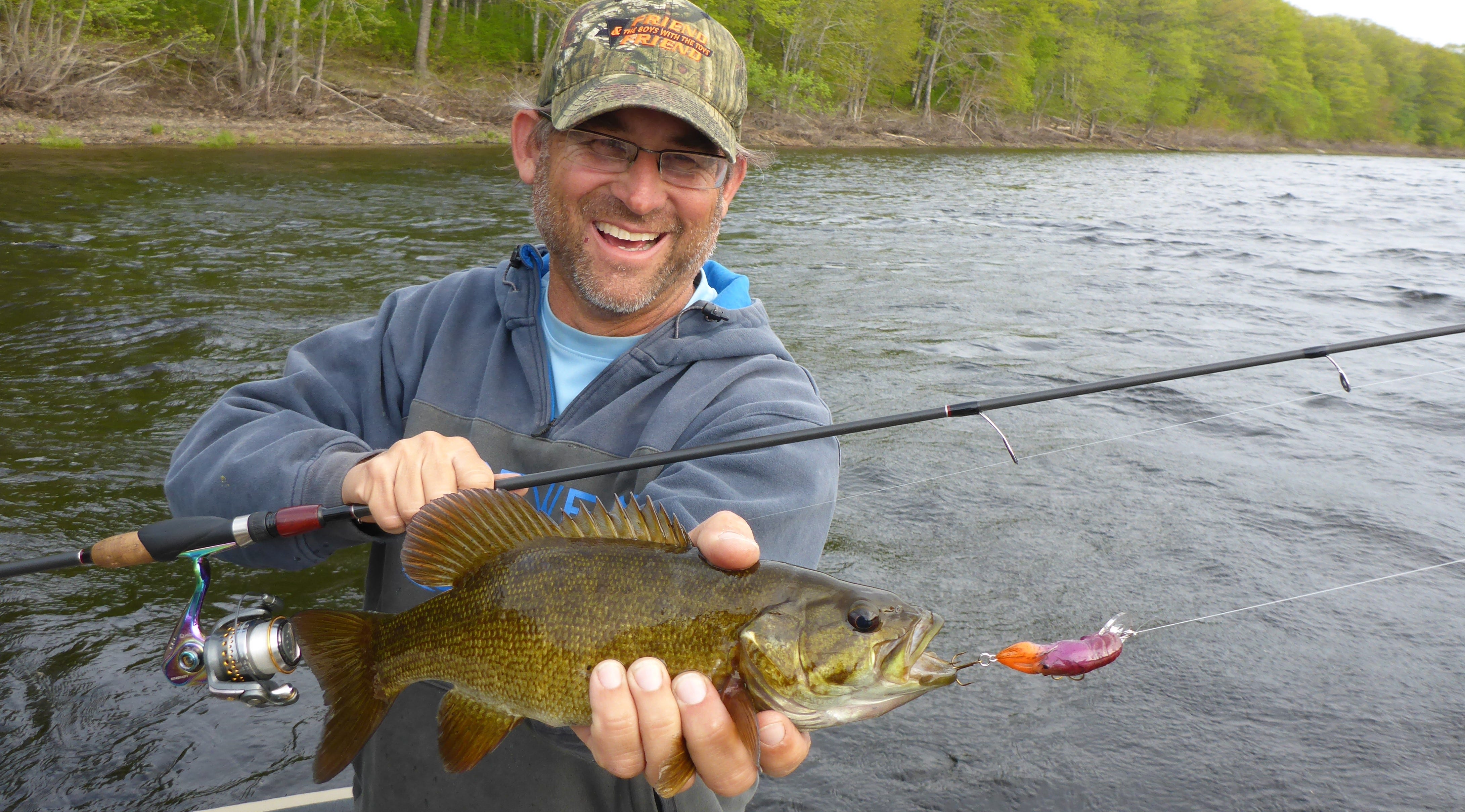
Choosing the Right Gear
Fishing Rods
Choosing the right fishing rod is crucial when targeting smallmouth bass in rivers. Opt for a medium to medium-heavy spinning rod that is about 6 to 7 feet in length. This will allow for accurate casting and sufficient power to handle the fight of a smallmouth bass. Look for a rod with a fast or extra-fast action, as this will help with sensitivity and hook sets. A rod with a sensitive tip is also important, as it will allow you to feel even the slightest nibble.
Fishing Reels
When it comes to fishing reels for smallmouth bass, a spinning reel is the most popular choice. Look for a reel with a smooth drag system and a high gear ratio, as this will allow you to quickly reel in the bass and prevent it from running into obstacles. Consider a reel with a large spool capacity, as smallmouth bass in rivers can be strong fighters and may require additional line.
Fishing Line
Choosing the right fishing line is essential for successfully catching smallmouth bass in rivers. Opt for a braided line with a high pound test rating, such as 20-30 pounds. This will provide the strength and durability needed to handle the strong fights and potential abrasion from sharp rocks. Additionally, using a fluorocarbon leader of about 12-15 pounds can help enhance your lure’s presentation and add some invisibility to your setup.
Selecting the Right Lure
Crankbaits
Crankbaits are highly effective lures for smallmouth bass in rivers. Opt for medium-sized crankbaits that mimic the appearance and movement of baitfish. Look for crankbaits with natural colors such as silver, shad, or crawfish patterns, as these are known to entice strikes from smallmouth bass. Cast the crankbait upstream and retrieve it back downstream, allowing it to mimic the movement of a disoriented baitfish.
Jigs
Jigs are another go-to lure for smallmouth bass in rivers. Choose jigs with a round or football-shaped head and pair them with soft plastic trailers, such as crawfish or grub imitations. Use natural colors that match the bass’ prey, such as brown or green. Cast the jig upstream and allow it to sink to the bottom. Use a slow and steady retrieve, bouncing the jig along the riverbed to imitate a crawfish or baitfish.
Soft Plastics
Soft plastics are versatile lures that can be used to target smallmouth bass in rivers. Choose soft plastic baits such as worms, minnow imitations, or creature baits in natural colors. Rig them on a Texas or Carolina rig for bottom fishing or on a weighted swimbait hook for a more active presentation. Experiment with different retrieve speeds and techniques to find what works best in your specific river conditions.
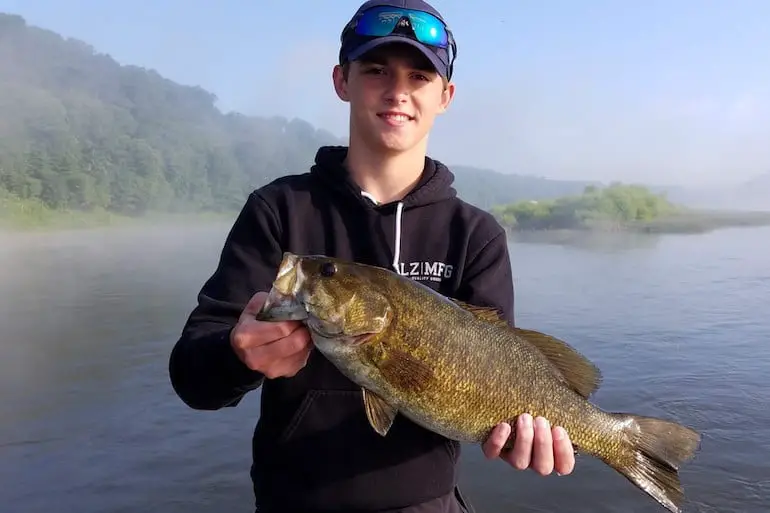
Techniques for Catching Smallmouth Bass
Casting and Retrieving
Casting and retrieving is a popular technique for catching smallmouth bass in rivers. Cast your lure upstream and allow it to drift naturally with the current. Maintain tension on the line and be ready for any strikes. Retrieve the lure back towards you using a steady and varied retrieve, mimicking the movement of a baitfish. Vary your retrieve speed and pause occasionally to entice strikes from smallmouth bass.
Drift Fishing
Drift fishing involves using the current to your advantage. Position yourself upstream from your target area and cast your lure downstream. Allow the lure to drift naturally with the current, keeping a close eye on your line for any signs of strikes. Use this technique to cover a large area of the river and explore different depths and structures. Adjust your weight or lure choice to maintain the desired depth as you drift.
Tube and Jig Rigging
Tube and jig rigging is a highly effective technique for smallmouth bass in rivers. Rig a tube bait or a soft plastic creature bait on a jig head and cast it upstream. Allow the rig to sink to the bottom and use a slow and steady retrieve, bouncing the rig along the riverbed. This technique imitates a crawfish or baitfish and can trigger aggressive strikes from smallmouth bass, especially in rocky areas or near river structures.
Understanding Smallmouth Bass Feeding Patterns
Pre-Spawn Feeding
During the pre-spawn period, smallmouth bass feed heavily in preparation for spawning. They become more aggressive and actively search for food to build up energy reserves. Target areas with deeper water near spawning grounds, such as rock shelves or drop-offs. Use lures that imitate baitfish or crawfish to entice strike from hungry bass. Focus on retrieving your lures near the bottom, as this is where smallmouth bass are known to feed during this time.
Spawn Feeding
During the spawn, smallmouth bass are primarily focused on reproduction and may be less interested in feeding. However, under certain circumstances, they may still strike at lures that are presented near their nests. Try using lures that mimic small fish or intruders, such as crankbaits or jigs, to provoke strikes from protective bass. Remember to practice catch and release during the spawn to protect the future bass population.
Post-Spawn Feeding
After the spawn, smallmouth bass are often in post-spawn recovery mode and may start feeding actively again. Look for areas with good cover, such as submerged logs or fallen trees. Use lures that resemble injured baitfish or crawfish to entice strikes from smallmouth bass. Explore different depths and structures to locate active feeding fish. During this period, smallmouth bass may be more willing to chase down faster-moving lures, so consider using techniques such as casting and retrieving with crankbaits or swimbaits.

Reading the River
Current Flow
Understanding the current flow in a river is crucial for successful smallmouth bass fishing. Smallmouth bass often position themselves in areas with moderate or slower current, allowing them to conserve energy while still having access to food. Look for areas where the current slows down, such as eddies or behind rock structures. Additionally, pay attention to seams or lines where fast and slow currents meet, as these can be productive spots for smallmouth bass.
Depth Changes
Smallmouth bass often relate to changes in depth within a river. Look for areas where the riverbed drops off or changes from shallow to deep water. These depth changes create opportunities for smallmouth bass to ambush their prey. Pay attention to sudden drop-offs or areas near submerged ledges. These areas often hold smaller fish that bass feed on, which in turn attract the larger predatory smallmouth bass.
Structure Identification
Identifying and fishing around river structures is crucial for successfully targeting smallmouth bass. Look for areas with fallen trees, submerged logs, or large rocks. These structures provide cover and holding areas for smallmouth bass. Cast your lures around these structures, as they can attract and hold bass throughout the day. Additionally, focus on areas where structures create eddies or current breaks, as these can be prime feeding locations for smallmouth bass.
Navigating River Obstacles
Rapids
Rapids can present a challenge when fishing for smallmouth bass in rivers. Exercise caution and be aware of your surroundings when navigating rapids. Smallmouth bass often congregate in the calmer areas just downstream of the rapids, as these spots provide resting areas and opportunities to ambush prey. Cast your lures near the edges of the rapids or in the slower-moving water behind rocks to target smallmouth bass in these areas.
Rock Gardens
Rocky areas or rock gardens can be productive spots for smallmouth bass, but they can also present some navigational challenges. Be careful when wading through rock gardens, as the uneven terrain can be slippery. Use caution and take your time to avoid injury. Look for deeper pockets or eddies within the rock gardens, as these areas often hold smallmouth bass seeking shelter and good access to food.
Snags and Fallen Trees
Snags and fallen trees can create excellent habitat for smallmouth bass, but they can also present navigational obstacles. Exercise caution when fishing around snags or fallen trees and be careful not to get your lures snagged in the branches. Cast your lures near the structure or use techniques such as flipping or pitching to target smallmouth bass in these areas. It’s important to be patient and work your lures slowly through the area, as smallmouth bass may be hiding in the shadows of the structure.
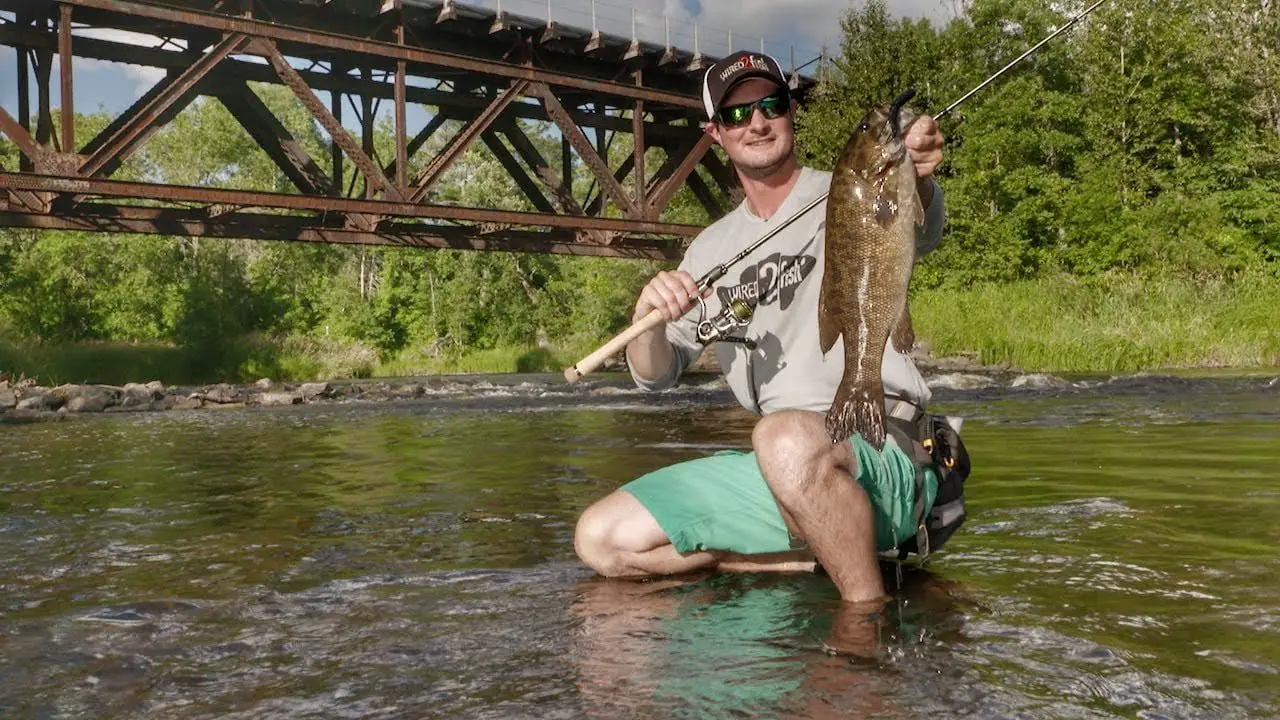
Using Live Bait for Smallmouth Bass
Crawfish
Crawfish are a natural prey for smallmouth bass and are highly effective as live bait. Use a small minnow trap or a hand net to catch live crawfish in the river. Hook the crawfish carefully through the tail or use a specialized crawfish harness to keep it lively and attractive to smallmouth bass. Cast the live crawfish near or around river structures, rocky areas, or eddies. Allow the crawfish to move naturally in the water and be prepared for aggressive strikes from hungry bass.
Minnows
Minnows are another excellent live bait option for smallmouth bass in rivers. Use a cast net or a minnow trap to catch live minnows in the river. Hook the minnows through the lips or behind the dorsal fin to keep them lively and swimming freely. Cast the live minnows near areas with good current flow or around river structures. Allow the minnows to swim naturally in the water, and be ready for the smallmouth bass to strike when they least expect it.
Nightcrawlers
Nightcrawlers are a classic and readily available live bait option for smallmouth bass. Use a worm harness or thread the nightcrawler onto a hook with a small weight to keep it near the bottom. Cast the rigged nightcrawler near areas with rocky bottoms or river structures. Allow the nightcrawler to drift naturally with the current, and be prepared for smallmouth bass to pick up the scent and strike. Nightcrawlers can be an effective choice when targeting smallmouth bass in rivers, especially during periods of high feeding activity.
Understanding Catch and Release Techniques
Proper Handling
Proper handling of smallmouth bass is essential when practicing catch and release. Wet your hands before handling the fish to minimize the removal of the fish’s protective slime. Support the bass by cradling it with both hands, ensuring a secure grip without exerting excessive pressure. Avoid squeezing the fish or placing it on rough surfaces, as this can harm the delicate scales and fins. Treat each smallmouth bass with care and gentleness to increase its chances of survival after release.
Reviving Fish
Reviving fish is crucial for their survival after being caught and released. Hold the smallmouth bass gently in an upright position in the water, allowing water to flow over its gills. Move the fish slowly back and forth to help oxygenate its gills. Avoid forcefully splashing the fish, as this can cause additional stress. Once the fish shows signs of increased strength and stability, gently release it back into the water and watch as it swims away gracefully.
Using Barbless Hooks
Using barbless hooks can greatly increase the chances of successfully releasing smallmouth bass unharmed. Barbless hooks are easier to remove from the fish’s mouth and cause less damage to its delicate tissues. They also make it easier to release the fish quickly and efficiently, reducing the time it spends out of the water and minimizing stress. Consider using barbless hooks when targeting smallmouth bass in rivers to ensure their well-being and the sustainability of the fishery.
In conclusion, catching smallmouth bass in rivers requires understanding their behavior and habitat, selecting the right gear and lures, as well as employing effective techniques. The best time to catch smallmouth bass can vary depending on the season, with spring, summer, and fall being prime times. Smallmouth bass tend to be found near river structures, eddies, and rocky areas. Proper gear selection, such as the right fishing rods, reels, and lines, is essential for success. Choosing the right lures, such as crankbaits, jigs, or soft plastics, can greatly increase your chances of hooking a smallmouth bass. Employing techniques like casting and retrieving, drift fishing, or tube and jig rigging can be highly effective. Understanding the smallmouth bass feeding patterns and reading the river conditions are also crucial skills. Navigating river obstacles, using live bait, and practicing proper catch and release techniques round out the comprehensive strategy for catching smallmouth bass in rivers. So grab your gear, head to your favorite river, and enjoy the thrill of catching smallmouth bass!



